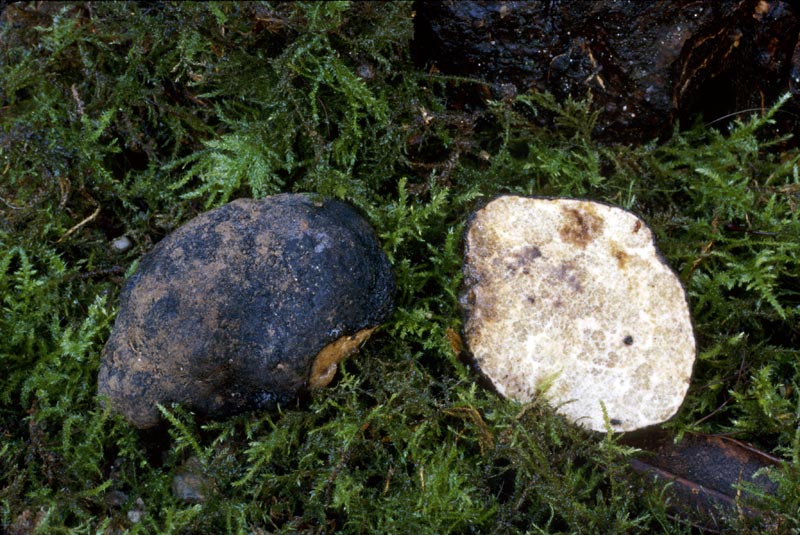Spores: The spores are smooth and very large (up to 100 μm long)
Conservation Status: Not of concern
Edibility: It is a highly sought-after edible and is collected commercially.
It is a highly sought-after edible and is collected commercially.
The Oregon black truffle is among our most beautiful fungi. The often large fruitbodies are brown to black with a smooth to rough exterior that encloses a solid, gray to olive or brownish gleba which is separated into pockets by pallid sterile veins. L. carthusianum often occurs in association with Douglas-fir along the coast, but can also be found in urban areas, people who excavate them from their garden (which must have a suitable tree nearby) often think they have found a lump of coal. As with all truffles, this species has a strong pungent odor when mature. Formerly it was classified in the genus Picoa.
PNW Herbaria: Specimen records of Leucangium carthusianum in the Consortium of Pacific Northwest Herbaria database.
CalPhotos: Leucangium carthusianum photos.




